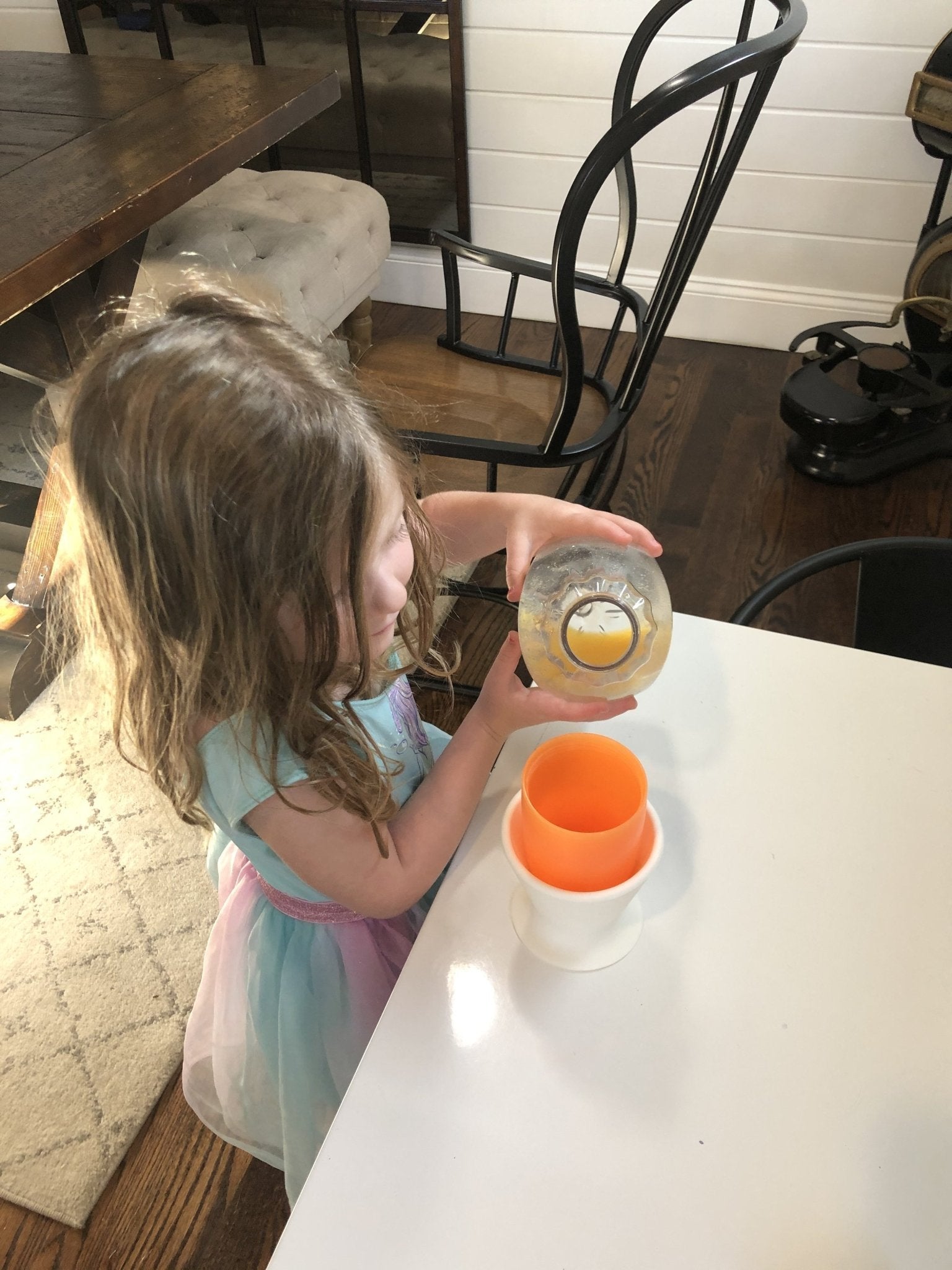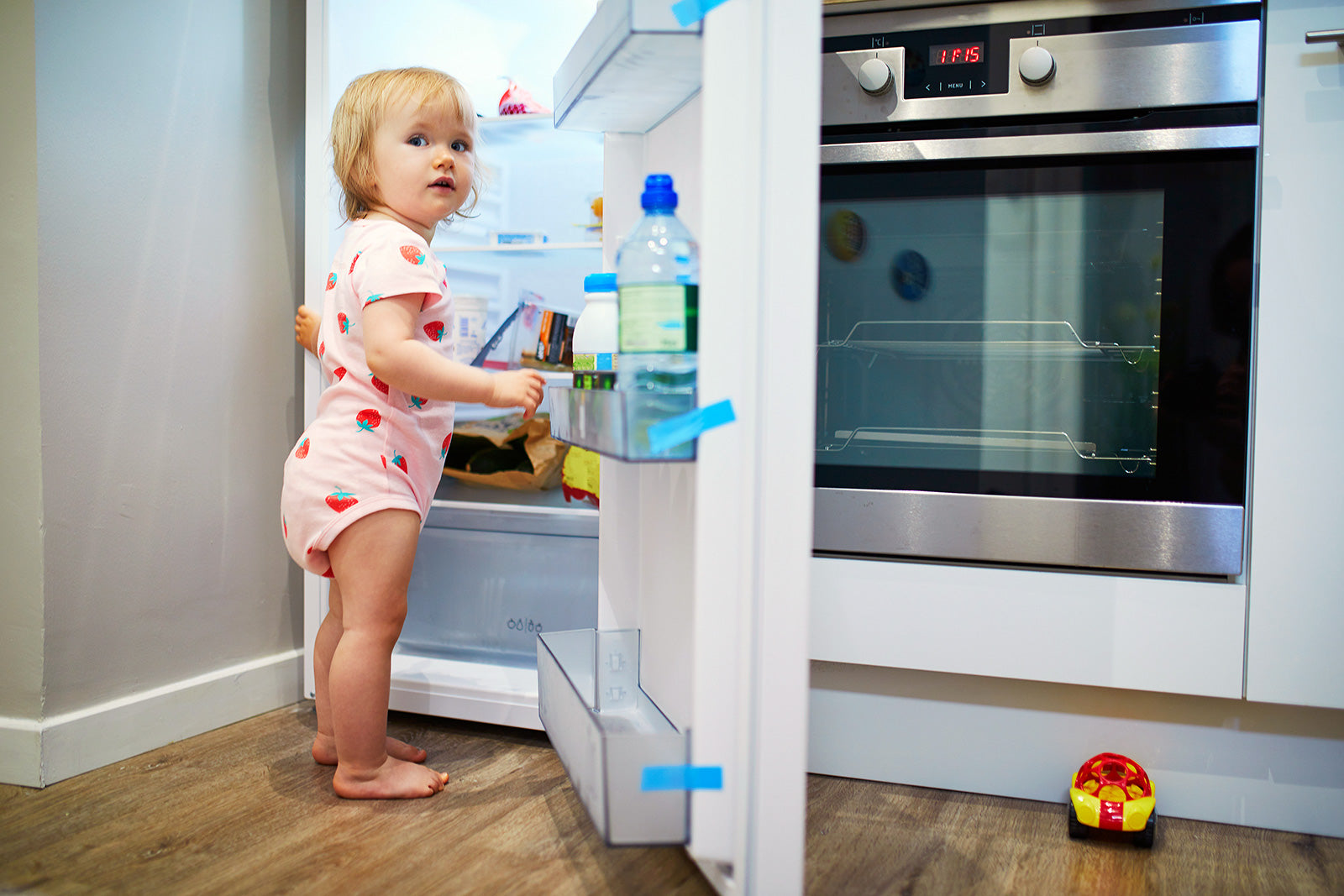How to Transition Your Baby from Bottle to Sippy Cup
By now you've probably figured out not to get too comfortable with the stage your baby’s in. Babies move fast, and there’s no slowing down anytime soon. As much as we celebrate our little ones being ready for something new, that transition can also mean leaving something behind. One of those being your baby’s bottle when it’s time to make the switch to a sippy cup.
The day is coming sooner than you think that your baby will need to transition from a bottle to a sippy cup. Saying good-bye is never easy, but we'll guide you here to help you make the swap as seamless as possible.

Best Time to Introduce a Sippy Cup to Your Baby
The burning question when it comes to this topic is, “When should I introduce a sippy cup to my baby?”
Though the exact timeframe will differ a bit from baby to baby, making the introduction around the time your baby starts eating solid foods makes the most sense.
To foster self-feeding, the AAP recommends encouraging your baby to start drinking from a cup around 6 months which is also when they recommend starting solid foods.
Choosing to wait longer is your prerogative, but most experts agree that waiting too much beyond 8 months leads to a higher chance of your little one refusing the sippy cup. Of course they’ll take it eventually, this just aims to make your job as a parent perhaps a bit more challenging.
Tips for Introducing Your Baby to a Sippy Cup
Introduction can be as straightforward as placing the sippy cup on your baby’s food tray each day and just letting them explore. Here are a few of our best tips to help the process along.
- Start with an empty cup. Though you’ll want to wait until about 6 months (or whenever you choose to start solids with your baby) to give your baby a sippy cup with liquid in it, there’s no reason you can’t let your baby start handling an empty one sooner. In his eyes it’s another toy to play with, and it will be a familiar object later on when it shows up at mealtime.
- Offer it to your baby with no expectations. Offering your baby a sippy cup for the first time does not mean they will begin drinking perfectly from the cup right away. It will likely get thrown on the floor, gnawed on, and a few drops of liquid may actually end up in her mouth. You can certainly show your baby how to use the cup, but there’s no need to fret if they’re not yet using it quite right.
- Fill it with water, breastmilk, or formula. Though your baby would surely love a bit of juice, you’ll want to steer clear of offering this due to its high sugar content. The AAP writes, “It is optimal to completely avoid the use of juice in infants before 1 year of age.” Water, breastmilk, or formula is all your baby needs, whether that’s in a bottle or a sippy cup.
- Choose an age-appropriate sippy cup. There’s really no right or wrong answer when it comes to choosing a sippy cup for your baby. However, there are certainly ones that are easier to handle than others for the youngest crowd. In our post, “7 Best Baby Bottles for Gas” we highlighted Dr. Brown’s Transition Bottle with Sippy Spout and Silicone Handles. This option means your baby’s bottle and sippy cup are essentially one in the same, and it’s likely that the bottle company your baby currently uses offers something similar.
Important: You do not want to replace any bottle feedings with a sippy cup at this time. They will continue to get full feeds from breast or bottle outside of these times. We’ll cover when to wean your baby off their bottle and how to make the full switch.
So, sippy cup introduction sounds pretty simple, right? But what about when it’s time to make the full switch? We’re not going to lie - this transition can be tricky. But with the right steps in place, your baby will be off the bottle and scattering sippy cups around your house in no time.
When to Wean Your Baby or Toddler Off Their Bottle
When we say that weaning your baby off their bottle can be hard, we don’t just mean for them. By now, those bottle feedings have become routine and likely a highlight of your day. Whereas feeding may have been overwhelming and time-consuming in the beginning, you and your baby have now gotten into a groove and it allows for precious snuggle time in an otherwise busy day.
But when your baby is ready for the next step, that’s the opportune time to take advantage of it. We promise the snuggles will continue!
Let's talk about when it's best to completely transition your baby from a bottle to a sippy cup.
According to John Hopkins All Children’s Hospital, 12-month-old babies have the coordination and hand skills to hold a cup and drink from it. Your baby’s pediatrician will likely encourage you to help your baby transition away from their bottle around their first birthday, as well. If this seems a bit too soon for you and your little one, it’s okay to utilize a month or two as a grace period. You know your baby best. Just know that often times the longer you wait the more pushback you’ll get from your little one about making the switch (they’re turning into a toddler, after all!)
This is also a great age to make the switch because it’s when many babies will start drinking whole milk. Since you’re already giving your baby something new, you might as well serve it in a sippy cup!
How to Transition Your Baby or Toddler from Bottle to Sippy Cup
At the point where you do decide it’s time to say good-bye to your baby’s bottle for good, hopefully they’ve had plenty of time to get used to having one around at meal times. If they haven't, don’t worry, just know there may be a bit longer learning curve for your baby to get the hang of it.
At this point, you’ll need to decide if you want to utilize a cold turkey approach for your baby or you’d rather move her away from the bottle gradually. And if you’ve already had to transition your baby from breast to bottle, as we discussed here, this process will probably seem a lot less daunting to you!
Here’s what to expect for each bottle-weaning option:
Bottle-Weaning Gradually
- Make sure your baby is comfortable with the sippy cup at meal times. If you’ve already been giving your baby a sippy cup at meal times, then you’re ready to move to the next step. Otherwise, you want to make sure your baby is comfortable using the particular cup you’ve given them and that they are able to drink from it well enough that they getting most of it into their tummy. Continue to guide them on how to use it correctly until they get the hang of it.
- Replace one feeding at a time. Start with one feeding per day and replace your baby’s bottle with a sippy cup. It’s best to choose one that accompanies a solid food mealtime or is a lesser amount. Keep the first and last feeds of the day as bottles initially; over time you will replace these feeds as well. This approach can be done over the course of a week if your child is taking well to it, or you can choose to replace one feed every few days until your baby has fully transitioned to a sippy cup.
- Stay consistent. Once you’ve already replaced a particular feeding with the sippy cup, it should stay that way.
- Don’t take away the pacifier at the same time. Some babies and toddlers have a strong desire to suck (which a bottle offers.) So though you will want to help your baby drop their pacifier at some point it they use one, now is not the time to do so. You may see them using it more frequently at this time as an added comfort and that’s ok.
Bottle-Weaning Cold Turkey
The road less traveled is the approach where you simply take your baby’s bottle away one day and neither of you ever look back. Even though this approach may sound harsh, for some babies, it ends up being the best way to go. You know your baby best. If drawn out transitions haven’t been that successful in the past, you may choose to go this route. Bye-bye bottles, hello sippy cups! Sometimes, the “rip off the band-aid” approach just ends up being better for everyone.
Here are few more tips to consider for the weaning process, whichever method you choose:
- Complete the transition during a stress-free time of life. This should be the only major change going on during the days or weeks it takes to make the switch if you can help it.
- Give your baby lots of extra TLC. This is hard on your baby and hard on you. Their bottle has been such a security for so long that it’s understandable why they may have such a hard time giving it up. It’s not about what’s in the bottle, but what the entire feeding time represents - comfort in the arms of the ones they love the most. Lots of extra snuggles will make the process easier on both of you. We suggest using a bökee for these times so you can hold your baby in one hand and prepare their sippy cup in the other.
- Give your baby opportunities to drink from a cup without a lid as well. With all their practice using a sippy cup, they’ll do much better holding a regular cup and setting it down. Though you won’t likely want to do this all the time, it’s best to let them get the hang of it sooner rather than later. Utilizing the bökee is a great way to avoid spills. It’s a great place for your toddler to set their cup while they’re eating so they won’t accidentally knock it over. And once your child wants to start becoming more independent, as we write about here, it helps them stabilize the cup so they can pour their own drink, as well.

We love the bökee for prepping sippy cups and avoiding spills.
If you are feeling all the feelings over taking away your baby’s bottle for good, we get it. Who knew a little sippy cup could make you so emotional? There will be plenty of these bittersweet moments where you want to keep your child little, but it's also so much fun to watch them grow. Be proud of your little one, and enjoy the extra time you have now that you don't have to prepare anymore bottles.




